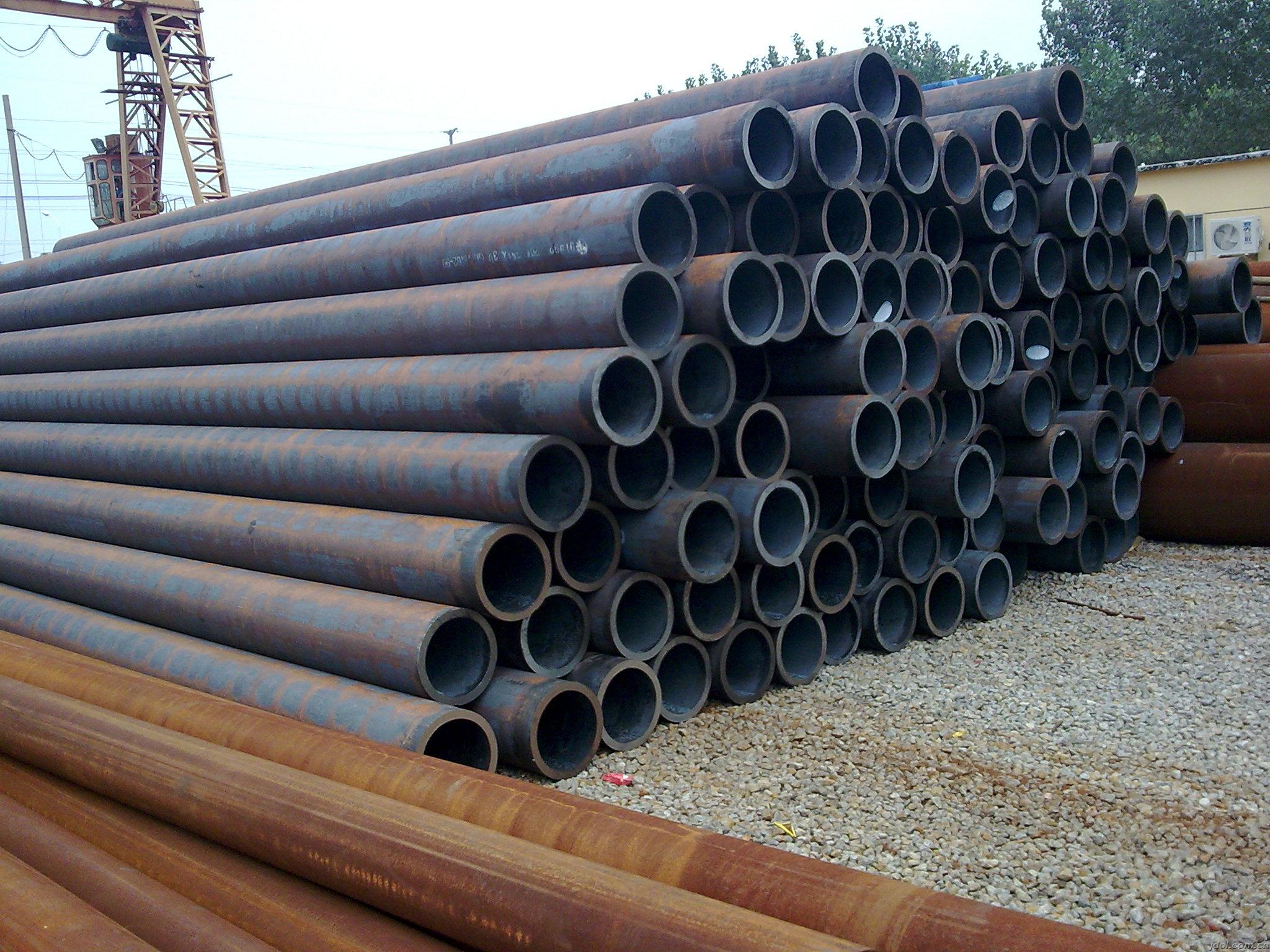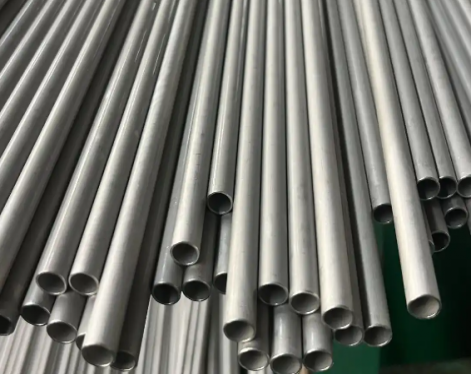According to the standard requirements, the dimensional inspection of seamless steel pipes mainly includes the wall thickness, outer diameter, length, curvature, ovality and end face shape of the steel pipe.
(1) Wall thickness inspection of seamless pipes
The tool used for wall thickness inspection is mainly a micrometer. During inspection, use a micrometer to measure the wall thickness of the steel pipe one by one. Before inspection, first verify whether the certificate of the micrometer is within the validity period, and check whether the micrometer is aligned with the zero position, whether the rotation is flexible, and the measuring surface should be free of scratches and rust spots, and can be used after passing the test. During the inspection, hold the micrometer bracket with the left hand and rotate the exciting wheel with the right hand. The diameter of the screw rod should coincide with the diameter of the measuring point, and the end face measurement should be no less than 6 points. If the wall thickness is found to be unqualified, it should be marked.
(2) Outer diameter and ovality inspection of seamless pipes
The tools used for outer diameter and ovality inspection are mainly calipers and vernier calipers. During inspection, measure the outer diameter of the steel pipe one by one with a qualified caliper. Before the inspection, first verify whether the certificate of the caliper is within the validity period, and use the vernier caliper to calibrate the used caliper, and check whether there are scratches and rust on the measuring surface. During inspection, the caliper should be perpendicular to the axis of the steel pipe, the steel pipe should be rotated slowly, and the maximum and minimum points of the section where it is located should be measured. If the outer diameter is found to be too large or too small, a mark should be made.

(3) Length check of seamless pipes
The tool used for steel pipe length inspection is mainly a steel tape measure. When measuring the length, the "O" point of the tape measure is aligned with one end of the steel pipe, and then the tape measure is tightened so that one side of the tape measure scale is close to the surface of the steel pipe.The length of the tape measure at the other end of the steel pipe is the length of the steel pipe.
(4) Bending inspection of steel pipes
The inspection of the bending degree of the steel pipe is mainly to check the bending degree of the total length of the steel pipe and the bending degree of each meter. The tools used are mainly a level, a feeler gauge and a fishing line.
When measuring the total bending of the steel pipe, align one end of the steel pipe with a fishing line, and then tighten the fishing line so that one side of the fishing line is close to the surface of the steel pipe.Then use a feeler gauge to measure the distance between the surface of the steel pipe and the largest gap between the fishing line, and the maximum distance measured is the total length of the steel pipe.
The measurement of the bending degree of each meter of the steel pipe mainly uses a level of 1m or 1.83m.When measuring, first stick the level on the surface of the steel pipe, place the level on the plane of the axis of the steel pipe, and then use a feeler gauge to measure the maximum gap distance between the level and the surface of the steel pipe.
(5) Check the shape of the end of seamless pipes
Both ends of the steel pipe should be cut into a specified angle and the burrs should be removed. The inspection method is to use a square ruler to check, and the pipe end bevel clamp is generally used on site.
(1) Wall thickness inspection of seamless pipes
The tool used for wall thickness inspection is mainly a micrometer. During inspection, use a micrometer to measure the wall thickness of the steel pipe one by one. Before inspection, first verify whether the certificate of the micrometer is within the validity period, and check whether the micrometer is aligned with the zero position, whether the rotation is flexible, and the measuring surface should be free of scratches and rust spots, and can be used after passing the test. During the inspection, hold the micrometer bracket with the left hand and rotate the exciting wheel with the right hand. The diameter of the screw rod should coincide with the diameter of the measuring point, and the end face measurement should be no less than 6 points. If the wall thickness is found to be unqualified, it should be marked.
(2) Outer diameter and ovality inspection of seamless pipes
The tools used for outer diameter and ovality inspection are mainly calipers and vernier calipers. During inspection, measure the outer diameter of the steel pipe one by one with a qualified caliper. Before the inspection, first verify whether the certificate of the caliper is within the validity period, and use the vernier caliper to calibrate the used caliper, and check whether there are scratches and rust on the measuring surface. During inspection, the caliper should be perpendicular to the axis of the steel pipe, the steel pipe should be rotated slowly, and the maximum and minimum points of the section where it is located should be measured. If the outer diameter is found to be too large or too small, a mark should be made.

(3) Length check of seamless pipes
The tool used for steel pipe length inspection is mainly a steel tape measure. When measuring the length, the "O" point of the tape measure is aligned with one end of the steel pipe, and then the tape measure is tightened so that one side of the tape measure scale is close to the surface of the steel pipe.The length of the tape measure at the other end of the steel pipe is the length of the steel pipe.
(4) Bending inspection of steel pipes
The inspection of the bending degree of the steel pipe is mainly to check the bending degree of the total length of the steel pipe and the bending degree of each meter. The tools used are mainly a level, a feeler gauge and a fishing line.
When measuring the total bending of the steel pipe, align one end of the steel pipe with a fishing line, and then tighten the fishing line so that one side of the fishing line is close to the surface of the steel pipe.Then use a feeler gauge to measure the distance between the surface of the steel pipe and the largest gap between the fishing line, and the maximum distance measured is the total length of the steel pipe.
The measurement of the bending degree of each meter of the steel pipe mainly uses a level of 1m or 1.83m.When measuring, first stick the level on the surface of the steel pipe, place the level on the plane of the axis of the steel pipe, and then use a feeler gauge to measure the maximum gap distance between the level and the surface of the steel pipe.
(5) Check the shape of the end of seamless pipes
Both ends of the steel pipe should be cut into a specified angle and the burrs should be removed. The inspection method is to use a square ruler to check, and the pipe end bevel clamp is generally used on site.









